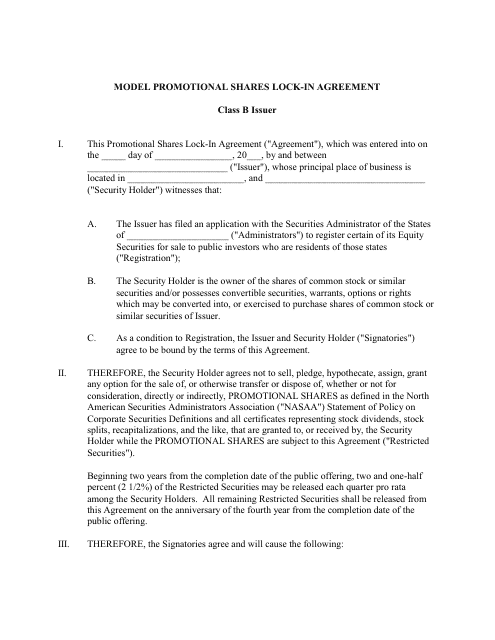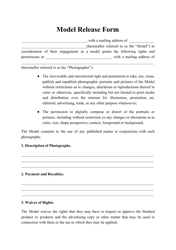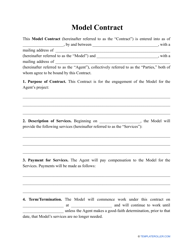Model Promotional Shares Lock-In Agreement Form - Class B Issuer
The Model Promotional Shares Lock-In Agreement Form - Class B Issuer is a legal document that outlines an agreement between a company (the Issuer) and the shareholders who hold Class B shares. It is used to restrict the selling or transferring of shares by the shareholders for a specific period of time, typically to promote stability and prevent excessive volatility in the company's stock price.
FAQ
Q: What is a lock-in agreement?
A: A lock-in agreement is a legal contract that restricts the sale or transfer of certain shares for a specified period of time.
Q: What are promotional shares?
A: Promotional shares refer to shares that are given as part of a promotional offer or incentive program.
Q: What is a Class B issuer?
A: A Class B issuer refers to a company that has issued shares with different classes, where Class B shares typically have different voting rights or other privileges compared to Class A shares.
Q: Why is a lock-in agreement important for promotional shares?
A: A lock-in agreement is important for promotional shares to ensure that the recipients cannot immediately sell or transfer the shares, which helps protect the value and integrity of the promotional program.
Q: What does a Model Promotional Shares Lock-In Agreement Form include?
A: A Model Promotional Shares Lock-In Agreement Form typically includes provisions regarding the duration of the lock-in period, restrictions on selling or transferring the shares, and any exceptions or conditions for early release.
Q: Can a lock-in agreement be modified or waived?
A: Yes, a lock-in agreement can be modified or waived if all parties involved agree to the changes and the necessary legal steps are taken.
Q: Is a lock-in agreement enforceable?
A: Yes, a lock-in agreement is generally enforceable as long as it is properly drafted, executed, and in compliance with applicable laws and regulations.
Q: Who should consult when using a Model Promotional Shares Lock-In Agreement Form?
A: It is advisable to consult with a legal professional or an attorney experienced in corporate law when using a Model Promotional Shares Lock-In Agreement Form to ensure its appropriateness and compliance with relevant regulations.










